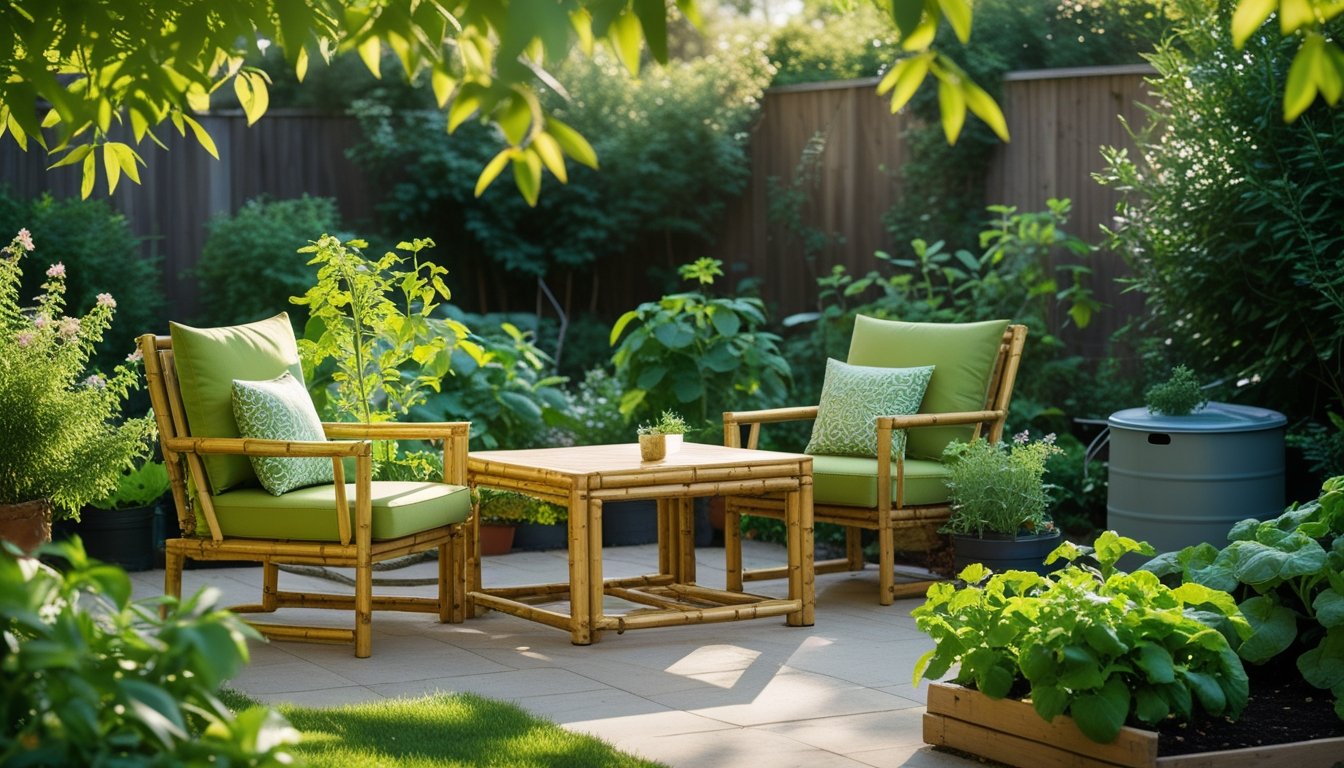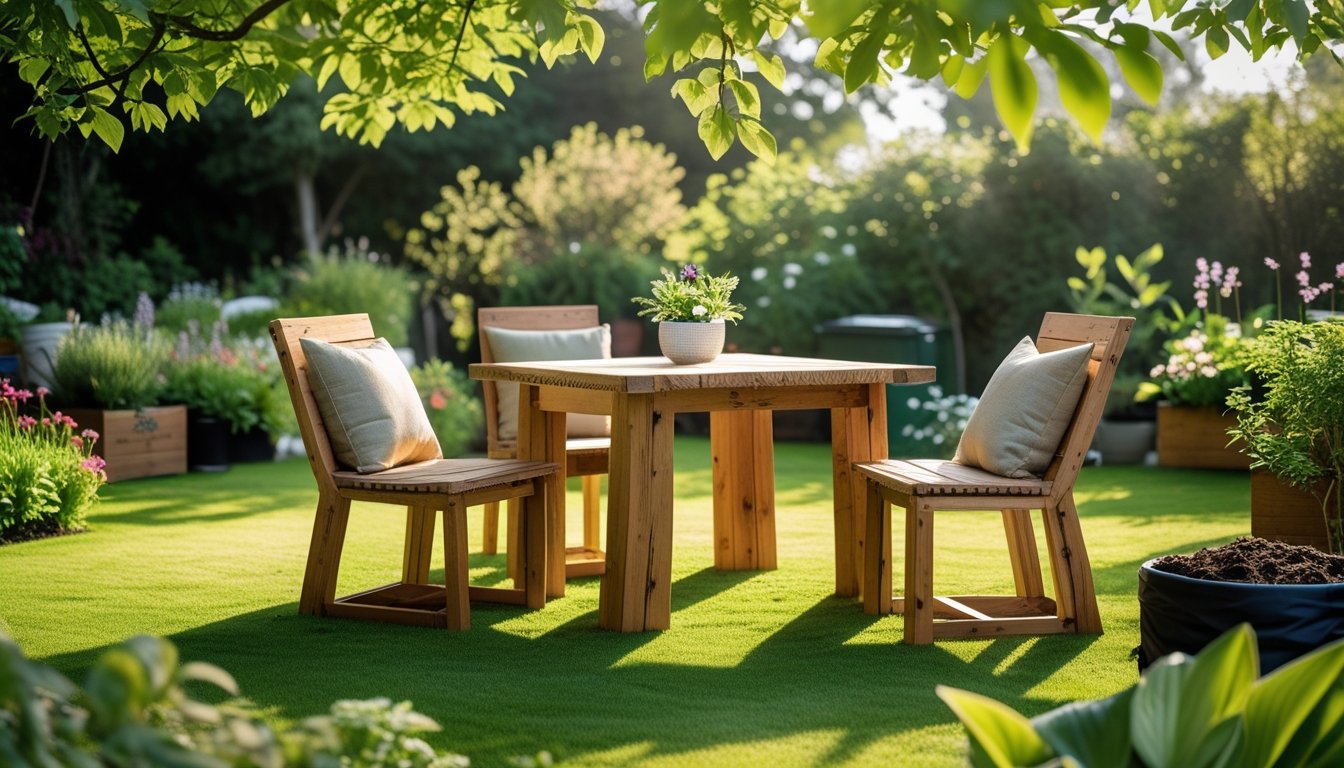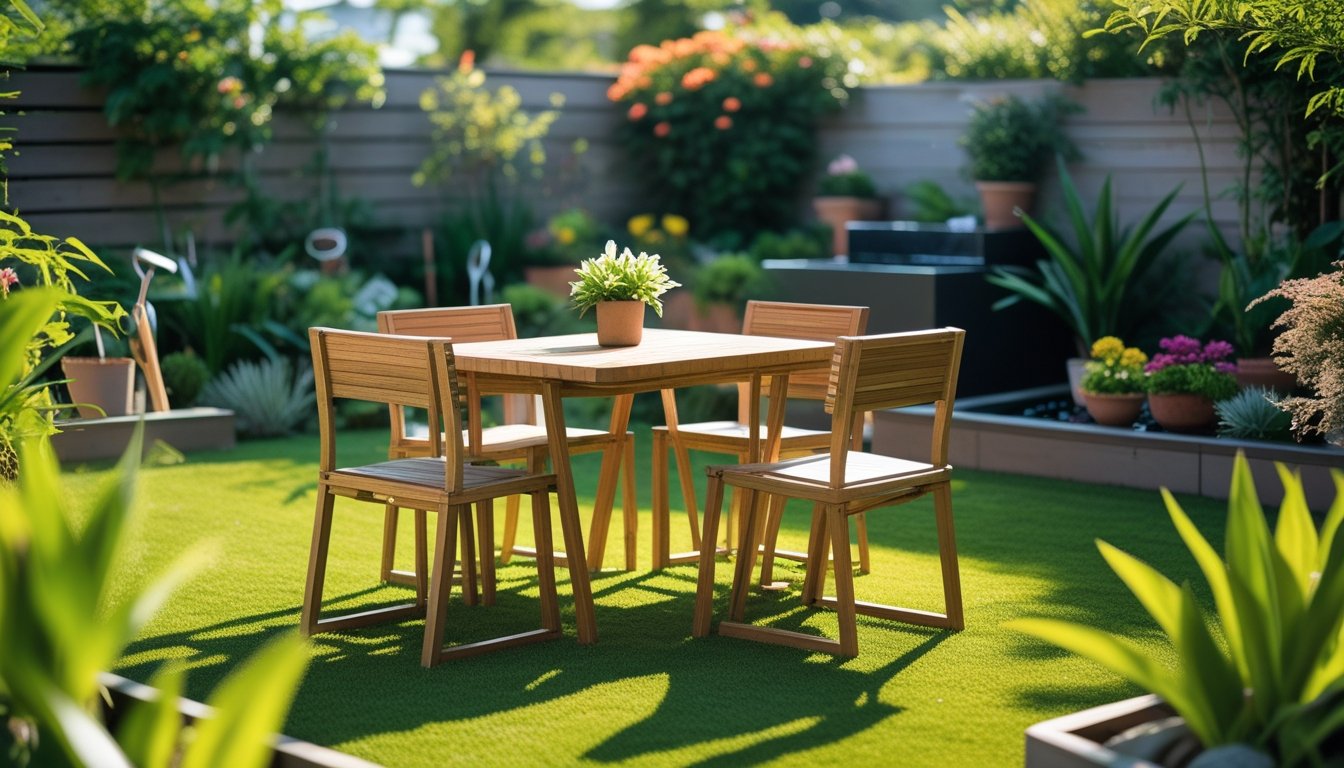Late updated: 11 Jun 2025 09:06
Written by: James Whitaker
Exploring Eco-Friendly Garden Furniture Choices: Sustainable Options for Outdoor Spaces
Exploring eco-friendly garden furniture options offers us a great opportunity to transform our outdoor spaces into sustainable havens. As more people become conscious of their environmental impact, the demand for responsible choices is growing. With thoughtful design and innovative materials, eco-friendly garden furniture allows us to create stylish, sustainable spaces right in our backyards. Sustainable garden furniture combines aesthetics and functionality while minimising harm to the environment.

In our quest for greener living, we find that the variety of sustainable furniture available is expanding. From responsibly sourced wood and recycled metal to durable natural fibres, there's an eco-friendly option for every taste and space. These pieces not only feature aesthetic appeal but also echo our commitment to a healthier planet.
While navigating the world of eco-friendly furniture might seem complex, understanding key principles can guide us to make informed choices. The future of garden furniture is bright, promising a blend of beauty, durability, and conscience.
Key Takeaways
- Eco-friendly furniture combines style and sustainability.
- A range of materials offers choices for every preference.
- Understanding principles guides wise furniture decisions.
Key Principles of Eco-Friendly Garden Furniture

When selecting eco-friendly garden furniture, it's essential to consider sustainable materials, the environmental impact and carbon footprint, as well as the longevity and weather resistance of the products. These elements ensure that our choices benefit not only our outdoor spaces but also our planet.
Sustainable Materials Used in Garden Furniture
Choosing the right materials is critical for sustainable outdoor furniture. Recycled plastics, for instance, offer durability and help reduce waste. They mimic traditional plastics but without the environmental guilt. Reclaimed wood is another excellent option. This material provides a second life to resources that might otherwise be discarded.
Additionally, bamboo is gaining popularity due to its rapid growth and renewability. Another option is aluminium, which is 100% recyclable and maintains its quality over time. Considering these materials aligns with our commitment to environmental stewardship.
Environmental Impact and Carbon Footprint
The production and transportation of furniture significantly impact the environment. Our goal is to minimise the carbon footprint through thoughtful choices. Local manufacturing reduces emissions associated with long-distance shipping. It supports the local economy and shortens supply chains.
Eco-friendly finishes, like water-based varnishes, help lower the release of harmful chemicals. Choosing products with minimal packaging also lessens waste. By focusing on these factors, we ensure our outdoor spaces promote sustainable living and eco-consciousness.
Longevity and Weather Resistance
Durability is crucial for garden furniture, especially given the UK's unpredictable weather. Weather-resistant furniture, such as that made from teak or eucalyptus, is an excellent investment. These materials are naturally resistant to moisture and pests, enhancing longevity.
Proper maintenance is essential to extend the life of our furniture. Regular cleaning and storage during adverse weather conditions can prevent wear and tear. By selecting weather-resistant pieces and caring for them diligently, we contribute to the ethos of sustainable design in our outdoor living spaces.
Eco-Friendly Materials and Design Options
Choosing eco-friendly garden furniture requires understanding the range of sustainable materials available to harmonise style with sustainability. Let's assess the options available for creating environmentally conscious outdoor spaces.
Recycled Plastic Furniture Choices
Recycled plastic is a robust option for garden furniture, offering durability without compromising the environment. By using materials such as recycled high-density polyethylene (HDPE), manufacturers can create outdoor seating that resists moisture, insects, and UV damage. This type of furniture is easy to maintain, typically requiring only soap and water for cleaning. Furthermore, production from recycled plastics reduces waste, supporting upcycling efforts and diverting materials from landfills. Selecting items marked with recycled content not only enhances the eco-friendliness of your outdoor area but also connects style with responsible consumption.
Bamboo and Renewable Resources
Bamboo is a standout choice for garden furniture due to its status as a renewable resource. Its rapid growth, often reaching maturity within three to five years, makes it a sustainable alternative to slower-growing hardwoods. Lightweight yet strong, bamboo furniture provides both functionality and aesthetics, easily blending with various design themes. By choosing bamboo products, we not only enjoy a versatile material but also support a reduction in deforestation and resource consumption. Using bamboo aligns our outdoor spaces with a commitment to preserving natural ecosystems and leveraging renewable resources.
Sustainably Sourced Wood Varieties
Opting for wood varieties marked as sustainably sourced underscores our commitment to responsible forest management. Select wood types such as teak and eucalyptus that are Forest Stewardship Council (FSC) certified. These woods are harvested in an environmentally conscious manner, minimising deforestation risks. FSC-certified teak, known for its durability and resistance to outdoor elements, enhances the longevity of our furniture pieces. By prioritising sustainably sourced wood, we contribute to the conservation of forest resources, ensuring our enjoyment of nature's bounty does not compromise its future availability.
Wicker, Rattan, and Natural Fibre Options
Natural fibres like wicker and rattan offer aesthetically pleasing and environmentally friendly choices for garden settings. Lightweight yet sturdy, they provide a classic look while maintaining flexibility in design. Sourcing raw materials that are responsibly harvested assures their eco-friendly status. These fibres can be combined with durable, recyclable materials and often are finished with eco-conscious dyes to enhance their allure. Utilising these materials promotes artistry and sustainability, offering an elegant solution for our eco-minded garden retreats.
Frequently Asked Questions

In this section, we address important considerations about eco-friendly garden furniture, including sustainable materials and their impact on the environment. We also explore certifications, maintenance tips, and the benefits of local craftsmanship.
What are the most sustainable materials to look for in garden furniture?
Recycled plastics, bamboo, and responsibly sourced wood are among the top sustainable materials. These options minimise environmental impact and often boast durability.
How does eco-friendly garden furniture contribute to environmental conservation?
Eco-friendly furniture reduces waste and pollution. By using recycled and renewable materials, it decreases deforestation and limits the need for new raw materials.
What certifications should be checked when purchasing green garden furniture?
Look for certifications like FSC (Forest Stewardship Council) for wood products and the Rainforest Alliance for assurance of eco-friendly practices.
Can you suggest ways to maintain and extend the lifespan of eco-friendly garden furniture?
Regular cleaning and protective treatments can help. Using covers during harsh weather and storing them indoors during winter also prolongs life.
What are the benefits of choosing locally made garden furniture?
Local products reduce transportation emissions. Supporting local businesses boosts the economy and often results in unique, high-quality craftsmanship.
How does the cost of eco-friendly garden furniture compare to traditional options?
While often slightly higher in initial cost, eco-friendly furniture offers long-term savings through durability and lower maintenance needs. Sustainable options are a smart financial choice over time.
